Trek Fuel EXe Aluminum
Wheel Size: 29’’ (compatible with 27.5’’ rear)
Travel: 140 mm rear / 150 mm front
Geometry Highlights:
- Sizes offered: S, M, L, XL
- Headtube angle: 64.8° (Low setting)
- Seat tube angle: 76.8° (Low setting)
- Reach: 483 mm (Size Large, low setting)
- Chainstay length: 440 mm (all sizes)
Material: Aluminum
Price:
- Complete bikes: $5,499 – $6,599

Intro
The Trek Fuel EXe isn’t new, but the aluminum version that Trek launched today is, bringing the wild TQ HPR50 drive system to a more affordable package — and adding some additional geometry adjustability while they’re at it.
We’ve now spent several months aboard the Shuttle AM and are ready to weigh in. Check out our video review for a quick rundown, and then read on for our Full Review and Deep Dive comparisons.
The Frame
Most of the details of the Fuel EXe aluminum frame carry over from the carbon one — it’s got 140 mm of rear wheel travel paired with a 150mm-travel fork (in stock guise; Trek condones running up to a 160 mm one) and can optionally be run with a 27.5’’ rear wheel, with the geometry-adjusting flip chip in the high position (more on that below). Trek does note that doing so will throw the speed readings on the display off slightly, and reduce the maximum speed at which the motor provides assistance by about one kilometer per hour since the system is calibrated for a 29’’ wheel.
In contrast to the standard Fuel EX, there’s no second flip chip to toggle the shock progression, though the aluminum Fuel EXe does get the angle-adjusting headset cups from that bike (which the carbon Fuel EXe lacks). The Fuel EXe gets a UDH derailleur hanger for SRAM Transmission compatibility and features a 180 mm brake mount, which can be adapted up to 203 mm if you’d like to run a bigger rear rotor.
All four sizes leave room for a water bottle inside the front triangle (though only up to a 20 oz one on the Small frame), and get internal routing for all the cables. Trek doesn’t publish suspension kinematics but says that the Fuel EXe can be run with air or coil shocks (in a 205 x 60 mm trunnion mount) and that the Fox Float X and DHX, the RockShox Super Deluxe air, and all coil shocks from both brands are known to fit. Other shocks may also clear but haven’t been verified to work. The Fuel EXe forges the Knock Block headset that Trek has used on a lot of bikes over the years.
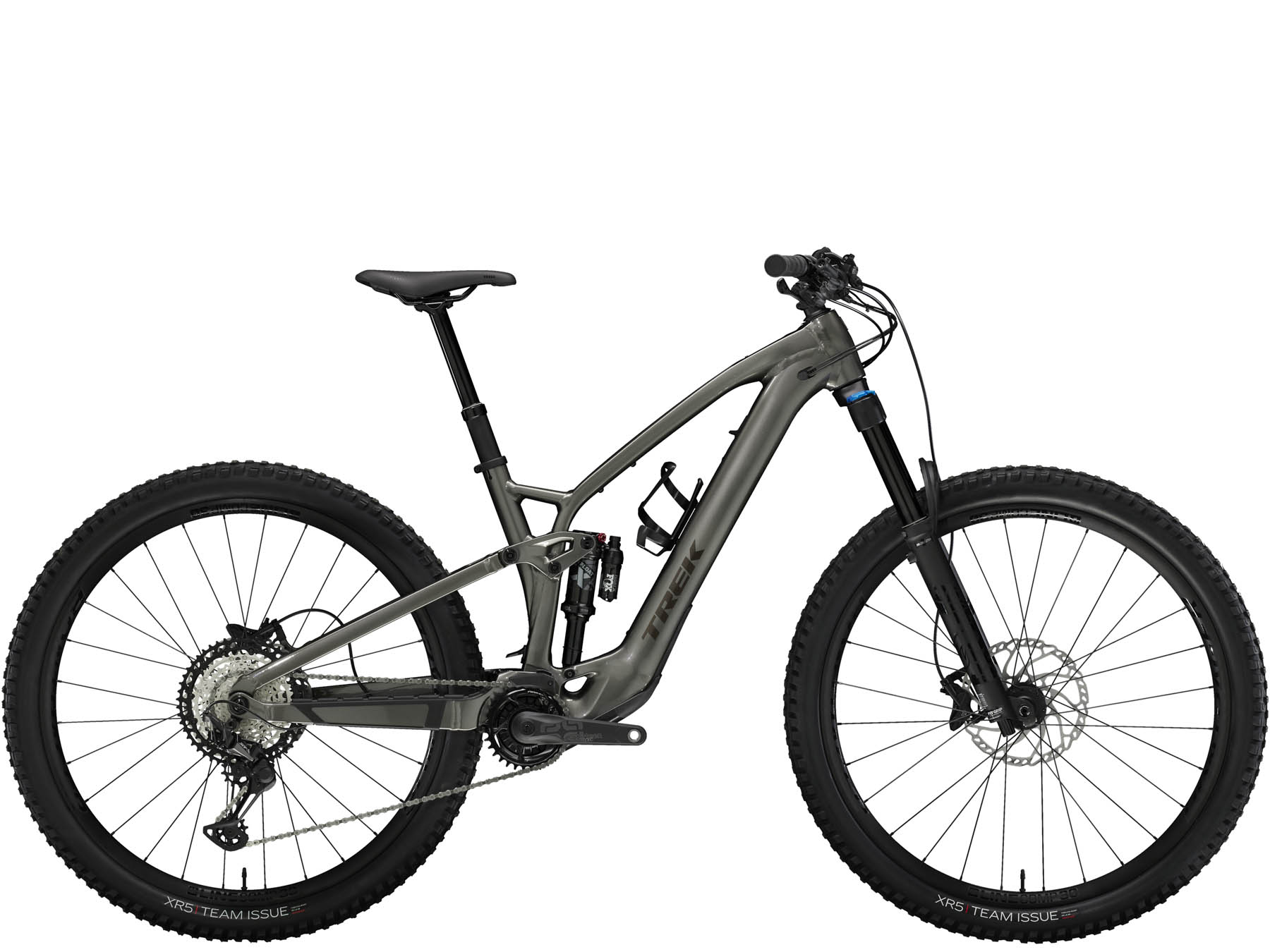
The Drive System
The big news with the original carbon Fuel EXe was the TQ HPR50 drive system, and that carries over unchanged to the aluminum version. It’s a compact, lightweight motor and drive system that offers 50 Nm of torque (as compared to 85 to 90 Nm in bigger, full-power eMTB drive systems) and up to 300 Watts of power. The stated weight of the drive unit is just 1,800 grams (about 1,100 grams lighter than a full-power Shimano EP8, for example). And while there are a number of lighter, lower-power drive systems on the market, what sets the HPR50 apart is its “Harmonic Pin Ring” reduction system.
In short, electric motors spin way too fast to match the cadence of a human pedaling a bike, so a lot of what goes into an e-bike drive unit is actually a series of gears and/or belts to slow down the final output to a usable range. In those packages, the motor itself is offset from the cranks, and the output shaft the cranks attach to sits forward of it, at the business end of the reduction system. The HPR50 works differently. The motor is concentric to the cranks, and the gear reduction happens in a single step.
The gist of the design is that, instead of having gears that mesh normally, the HPR50 has a pair of splined rings that mesh one inside the other, but with the inner ring having fewer teeth than the outer. The inner ring also pivots slightly eccentrically, so that rather than spinning with and driving the outer ring, it precesses around the outer ring slowly, moving one tooth over at a time, and thus providing a reduction in motor speed of 17:1.
That means that at a given pedaling cadence, the Fuel EXe’s motor is turning much more slowly than those in more conventional drive units — a gear reduction of more like 50:1 is common — which Trek says helps make for a quieter system and a more natural feel to the power delivery than you get with other e-MTB drives. It’s claimed to be both quieter and also a less irritating, whining sound than most drive systems, which they argue is at least as important as outright volume — citing the example of a mosquito buzzing as something that’s quiet, but still very annoying.
[Trek’s writeup on the sound analysis they’ve done for the TQ drive system is pretty interesting, but too involved to cover in full detail here. Check it out on their site if you’re interested.]
The main battery has a 360 Wh capacity, and an optional range extender (which fits into a water bottle cage, with an additional strap to keep it secure) adds an extra 160 Wh. The main battery is removable, though doing so requires removing the battery door and a couple of bolts to slide it out the end of the downtube, just forward of the motor. The main battery can be charged in the bike or when removed, and the range extender can be daisy-chained to charge both simultaneously. Charge time for the main battery is stated at 2 hours; the range extender is said to take about an hour. The range extender retails for $600, plus $50 for the power cable to connect it to the bike, and $10 for the mounting bits (sold separately because Trek’s TQ-equipped road bikes use different versions).
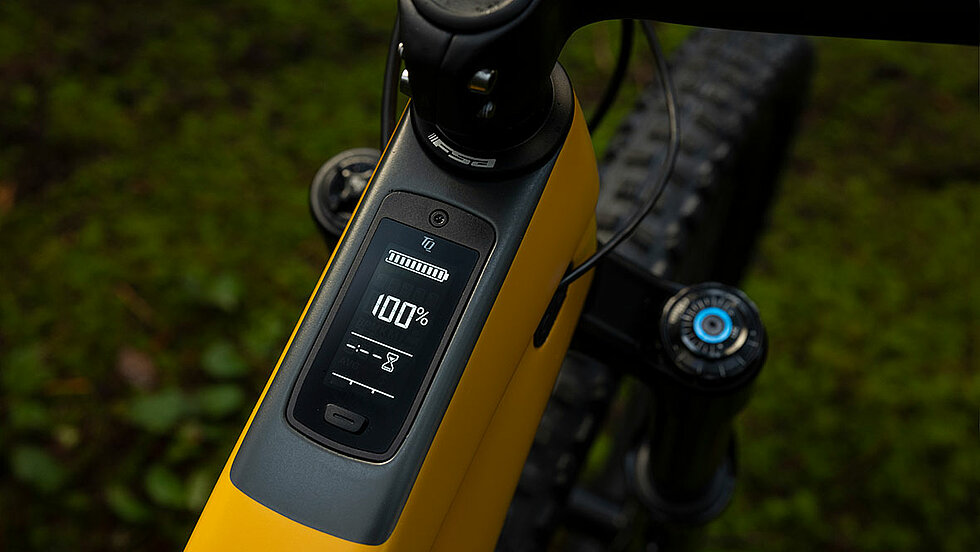

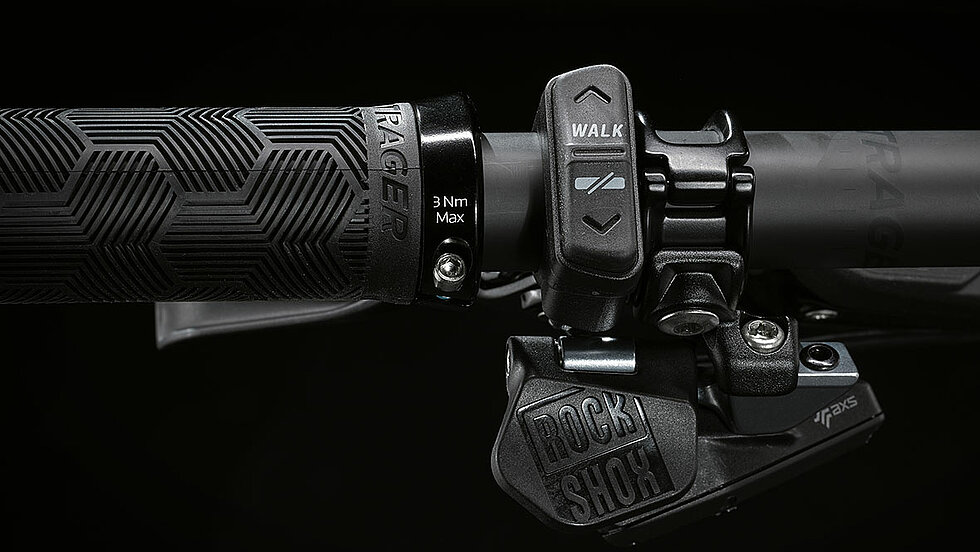
Fit & Geometry
The geometry of the aluminum Fuel EXe is identical to that of the carbon version (with the caveat that the aluminum frame adds the optional +/- 1 degree headset cups from the standard Fuel EX). It’s offered in four sizes, Small, Medium, Large, and XL, with all four getting a 64.8° headtube angle and 76.8° effective seat tube angle; reach ranges from 428 mm on the Small to 508 mm on the XL, with the Medium coming in at 453 mm and the Large at 483 mm. The chainstays are 440 mm long for all four sizes. Those numbers are all stated with the flip chip in the low position, and the stock zero-degree headset cups. The high flip chip setting steepens the angles by about a half degree, adds a few millimeters to the reach, and raises the bottom bracket by 7 mm, from 39 mm of drop to 32 mm.
Those numbers are also fairly similar, but not quite identical to the standard Fuel EX, which we found to be an especially well-rounded and versatile bike. Trek doesn’t publish a geometry chart for the Fuel EXe with a 27.5’’ rear wheel, or with the optional angle-adjusting headset cups, but their website does list those options for the standard Fuel EX, and you can get a pretty good idea of what the EXe would look like by extrapolating from those. It is also worth noting that the Fuel EXe comes in fewer sizes than the Fuel EX, which adds an XS, M/L, and XXL to the range.
The Builds
Trek is offering the Fuel EXe in three new builds on the new aluminum frame, to go with the existing carbon-framed options (see Trek’s site for the rundown on those).
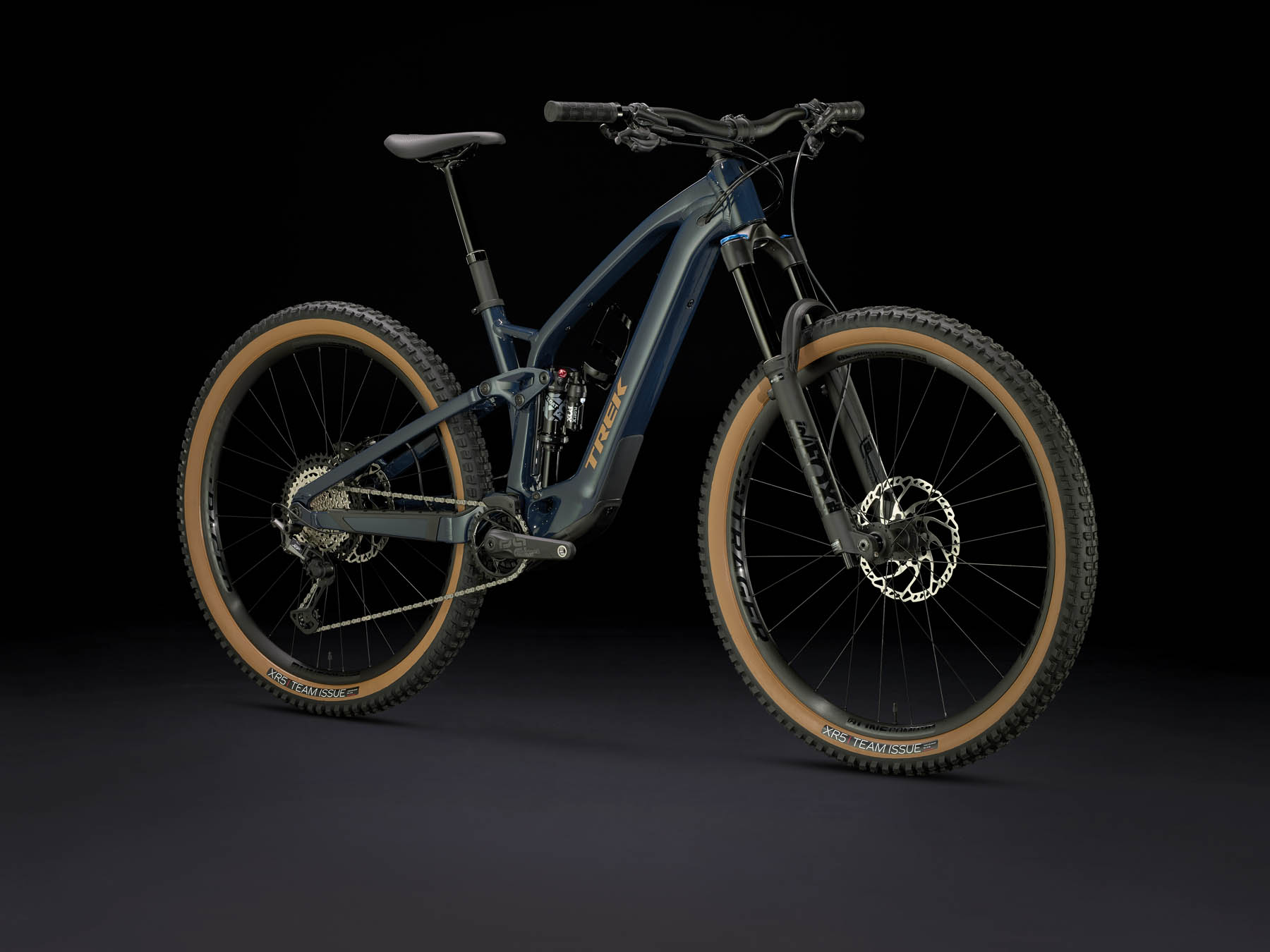
- Drivetrain: Shimano Deore 12-speed w/ e*13 Plus crank, 165 mm arms
- Brakes: Tektro HD-M745
- Fork: RockShox Recon Silver
- Shock: X-Fusion Pro 2
- Wheels: Bontrager Line 30
- Dropper Post: TransX
- Drivetrain: Shimano XT w/ SLX chain and e*13 Plus crank, 165 mm arms
- Brakes: Shimano Deore 4-piston
- Fork: Fox 36 Rhythm
- Shock: Fox Float X Performance
- Wheels: Bontrager Line Comp 30
- Dropper Post: Bontrager Line
- Drivetrain: SRAM GX T-Type
- Brakes: SRAM DB8
- Fork: Fox 36 Rhythm
- Shock: Fox Float X Performance
- Wheels: Bontrager Line Comp 30
- Dropper Post: Bontrager Line
Some Questions / Things We’re Curious About
(1) How does the TQ HPR50 drive system perform on the trail? Trek’s claims of reduced noise and more natural power delivery sound great in theory, but are they borne out?
(2) Does the Fuel EXe keep the versatility that we so appreciated in the Fuel EX, or does it feel like a different sort of bike entirely?
(3) And who is going to be best served by this class of lightweight, lower-power e-MTBs in general, as compared to either a conventional MTB or a bigger full-power motorized one?
FULL REVIEW
Trek touts the Fuel EXe as providing a more familiar and non-motorized feel than other eMTBs, rather than aiming for maximum power and massive levels of assistance. But how does the Fuel EXe accomplish these things on the trail, and how does it compare to both heavier eMTBs with bigger batteries as well as mountain bikes that don’t have a motor at all? We spent most of last summer and fall on the Aluminum Fuel EXe figuring this out.
Fit & Sizing
Dylan Wood (5’10.5″, 160 lbs / 179 cm, 72.5 kg): We tested the Large Fuel EXe, which Trek recommends for folks between 5’10” and 6’2″ (177-188 cm). And at just over 5’10” (179 cm), I am within, but on the shorter side of Trek’s suggested sizing band. Whenever we get a new bike to review, I will do my best to avoid looking at any geometry charts before riding it. When I first started pedaling the Fuel EXe up a fire road, I found the fit to be immediately comfortable and familiar for a modern Large Trail bike.
I will say that I was quite surprised when I later looked at its geometry to find that the Large has a somewhat lengthy 483 mm reach in its “low” geo setting (which grows to 489 mm in the “high” setting). It certainly didn’t feel as lengthy as other bikes I’ve been on with a similar reach, such as the Large Canyon Spectral 29 at 485 mm. The Fuel EXe’s reasonable 630 mm effective top tube length might help explain why I didn’t feel too stretched out on the Large frame, but I found the Fuel EXe to provide a comfortable and practical seated pedaling position, similar to other bikes I’ve ridden with reach numbers closer to 475 mm.
The Fuel EXe accommodates a neutral body position when climbing — not too biased toward steeper or flatter trails. I sometimes found myself wishing for a steeper seat tube angle on the sharpest of climbs, but then again, its moderate 76.8º effective seat tube angle made for comfortable pedaling on flatter roads, which I tend to do more of on eMTBs than unpowered MTBs.

When going downhill, the Fuel EXe provides plenty of room to move around on the bike. At 44.4 lbs / 20.1 kg (size Large, no pedals, tubeless), this bike is not light coming from the world of motorless bikes, but when maneuvering it around out on the trail, it doesn’t feel very unwieldy. That is perhaps where the 483 mm reach becomes more evident, in a good way — the Fuel EXe provides plenty of room for descending, similar to today’s modern Enduro bikes.
Simon Stewart (6’, 170 lb / 183 cm, 77.1 kg): I’m right in the middle of Trek’s size chart for the size Large, and like Dylan, found the fit to be mostly spot on. I agree that the reach feels shorter than 483 mm, and would encourage riders who typically ride size Large bikes, but are worried about the Large EXe running big to get a test ride before sizing down.
I prefer a taller stack height than the Fuel EXe’s 629 mm (size Large, “low” setting), and thankfully the steerer tube was plenty long to accommodate raising the stem up to a position more comfortable for me. Dylan likes a lower stack height, and when we traded bikes, I would move the stem up, and then he would move it back down after I handed it back to him — if I owned a Fuel EXe, I would most likely install a higher rise handlebar.
Overall, once I moved the stem up, I felt immediately comfortable on the Large Fuel EXe. I found seated and standing climbing positions, as well as seat-down descending to offer an un-cramped, yet not too roomy fit, that doesn’t hold it back in any of those situations.
Climbing
Dylan: The Fuel EXe’s smooth, quiet motor provides natural and consistent assistance when going uphill. This is far from the most powerful eMTB on the market, but the Fuel EXe facilitates a predictable experience similar to unpowered mountain bikes when climbing with the assistance of its motor. Don’t get me wrong, the Fuel EXe still provides ample power to justify the extra weight on this motor-equipped mountain bike — in full-power mode, the Fuel EXe can breeze up climbs and turn 3-hour rides into 2-hour ones.
The Fuel EXe seems to slightly prioritize good traction over maximum pedaling efficiency, which I think is a very reasonable tradeoff for this bike. There is some noticeable pedal bob when putting a lot of force into the drivetrain, but with the assist from the motor, this doesn’t result in too much inefficiency when going uphill. And on the plus side, I am grateful for the extra traction the Fuel EXe affords when encountering loose and technical climbs.
It’s worth mentioning that I clearly found the limits of the Fuel EXe’s pedal assist on very steep and loose climbs. Even in the most powerful setting, the Fuel EXe only supplies up to 300 watts of assist. And while that sounds like a lot, and generally is, I encountered some climbs in which I had to supply over 400 watts of power myself and wished for a little extra power. I would be able to do these climbs on full-power eMTBs like the Pivot Shuttle AM, with traction being the only limiting factor on that more powerful bike. However, my one gripe with most full-power eMTBs is a non-issue on the Fuel EXe. On very steep, loose climbs, it can be hard to get going again on a full-power eMTB, with the rear wheel simply spinning in the dirt rather than propelling you forward. The smooth TQ HPR50 motor on the Fuel EXe did a good job of adding power while still maintaining traction in these instances.

Simon: The Fuel EXe has a lovely combination of traction and fluid power delivery from the TQ drive system, resulting in a bike that is well-controlled and enjoyable to climb on. The seated climbing position is comfortable for long durations, and while Dylan noted that he would prefer a steeper effective seat tube angle when on more challenging terrain, I found the 76.8º angle to be fine — in general, I think eMTBs can get away with slacker seat tube angles then non-motorized bikes because of the higher climbing speeds that go along with having a motor. I also noticed some pedal bob in high rider effort situations, but like Dylan, it didn’t bother me since the motor assist seemingly negates any inefficiencies there.
I agree with Dylan about the limitations of the TQ HPR50 drive system when it comes to climbing the nastiest trails, but I also think it’s fair to say that the numbers speak for themselves, and a lightweight lower-powered drive system simply can’t do the same things as a full-power drive system. For me, the lower power of the TQ motor doesn’t take away from the overall climbing performance of the Fuel EXe but rather provides a different experience. I like having to work hard myself, and with the 300 watts the TQ motor can supply, I find myself routinely trying to match its output, which translates to some pretty fast climbing — plus I’m also less inclined to seek out the horrendous climbs I find so rewarding on full-power eMTBs, so that component isn’t much of a factor for me.
The Fuel EXe’s lower weight (compared to full-power eMTBs), combined with the natural feeling assist, and supportive, yet still nicely active suspension, made it very competent in slow technical terrain — the Fuel EXe is one of the better eMTBs I’ve ridden in that setting.
Descending
Dylan: This is where the Fuel EXe surprised me the most. On the downhill, its suspension platform continues to provide loads of traction, keeping the bike composed and allowing for plenty of control through rough sections of the trail. The Fuel EXe easily surpassed my expectations for how well a 140mm-travel Trail bike would descend in higher speed, more technical sections.

I found that I was able to descend very aggressively on the Fuel EXe, taking more speed into rock gardens and enjoying a planted, composed feel. The Fuel EXe feels very comfortable at high speeds, where its handling stays calm and its heavy chassis avoids being deflected. It has great small-bump compliance, smoothing out trail chatter really effectively. I did find that it can get a little deeper into its travel than I’d like when hitting berms at high speed or trying to pump rollers, losing some efficiency in these instances. But, for the more common small and medium bumps, the Fuel EXe does a great job of handling them. Additionally, the Fuel EXe has a really big sweet spot, allowing for a variety of riding stances. I did get a little too far off the back of the bike and had the front end wash out on me a couple of times, but I wouldn’t say the Fuel EXe requires an aggressive, forward riding position.
While the Fuel EXe has a slight preference for going fast and straight, it also balances maneuverability at slower speeds nicely. I enjoyed how this bike cornered, with a low center of gravity that allowed for a familiar feeling when tipping the bike over into corners. It handles slow-speed tech just fine, too, though the Fuel EXe does require a bit more effort than a non-motorized mountain bike to make dynamic moves at slower speeds. I found the smooth pedal assist from the TQ HPR50 motor to be beneficial in these situations as well, with just a quarter crank of the pedals providing a much-needed boost to keep my momentum in janky, flat rock gardens.
Another benefit I found with the TQ HPR50 motor on the Fuel EXe is that this bike can be pedaled beyond the limit of its motor assist when descending at high speeds effectively. Full-power eMTBs can have a lot of resistance in their motors, making exceeding the bike’s assist limit of 20 mph harder as the motor stops working with you, and flips to working against you in these instances. I found that the Fuel EXe, while not as friction-free as a mountain bike without a motor, has significantly less drag in the system when pedaling over 20 mph than any full-power drive system I’ve ridden.
Simon: I’m in complete agreement with everything Dylan has said about descending on the Fuel EXe, and will add that I followed Dylan down a particularly spicy descent on the much burlier Orbea Wild, and was blown away by how fast he was going.
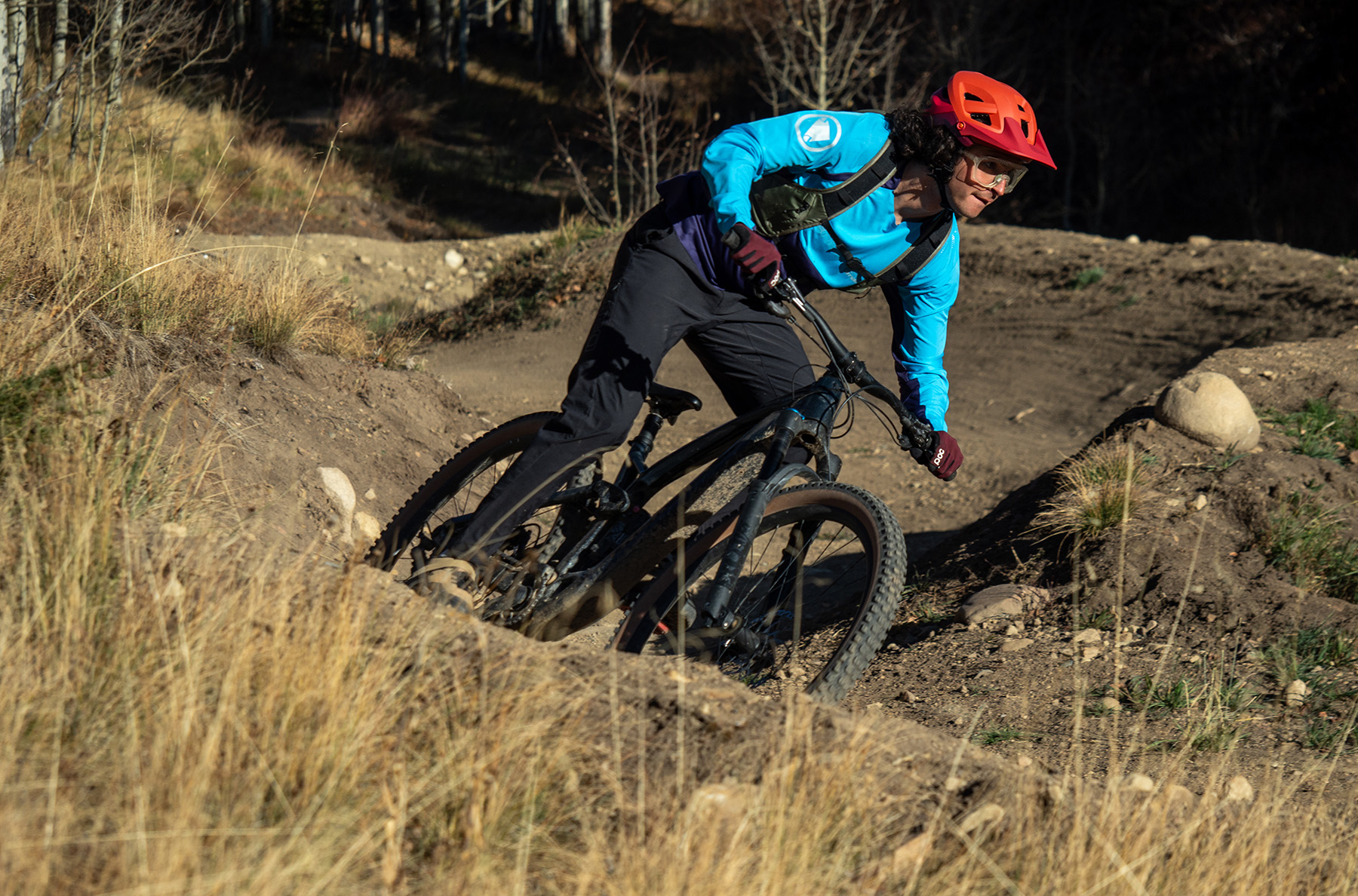
Inspired by Dylan, I also pushed the pace on the Fuel EXe and was impressed by its composure and stability, while also having a sneaky little playful side. What I mean by that, and Dylan alluded to it, is that the Fuel EXe corners beautifully, and with a little bit of forward weight bias, it can be coaxed into an incredibly fun tail-out oversteer.
It’s hard to get the Fuel EXe in over its head, which is a testament to how well-sorted it is while descending, both Dylan and I agree that it surprised both of us and left us impressed.
The Build
Dylan: Overall, I think Trek packed a lot of value into this bike while still leaving some room for improvement. I’ve had consistently good experiences with the 12-speed Shimano XT drivetrain, and that continued to be true with the Fuel EXe. Although, I will say that I do prefer my electrified bikes to be paired with SRAM Transmission drivetrains, mostly due to the smoother downshifting under load that I tend to do more of on bikes with motors. The Shimano XT 4-piston brakes were also fine on the Fuel EXe aluminum, where I enjoyed their sharper feel, where once engaged, it doesn’t take much movement of the lever to significantly increase braking power.
The suspension choices on this bike are perhaps the most value-oriented aspect of the overall build kit, which goes against my personal preference, but I can still understand why Trek chooses to do this to keep costs down. The Fox Rhythm 36 fork with GRIP damper is a rather unsophisticated fork without much fine-tuning to be had, and I found that the GRIP damper simply couldn’t keep up with high-speed, chunky sections of trail. I had fewer complaints about the Fox Performance Float X shock that handles the rear suspension of the Fuel EXe, where I found the factory compression and rebound tunes to be quite good, leaving me with very little to complain about along the lines of how the rear suspension behaves.
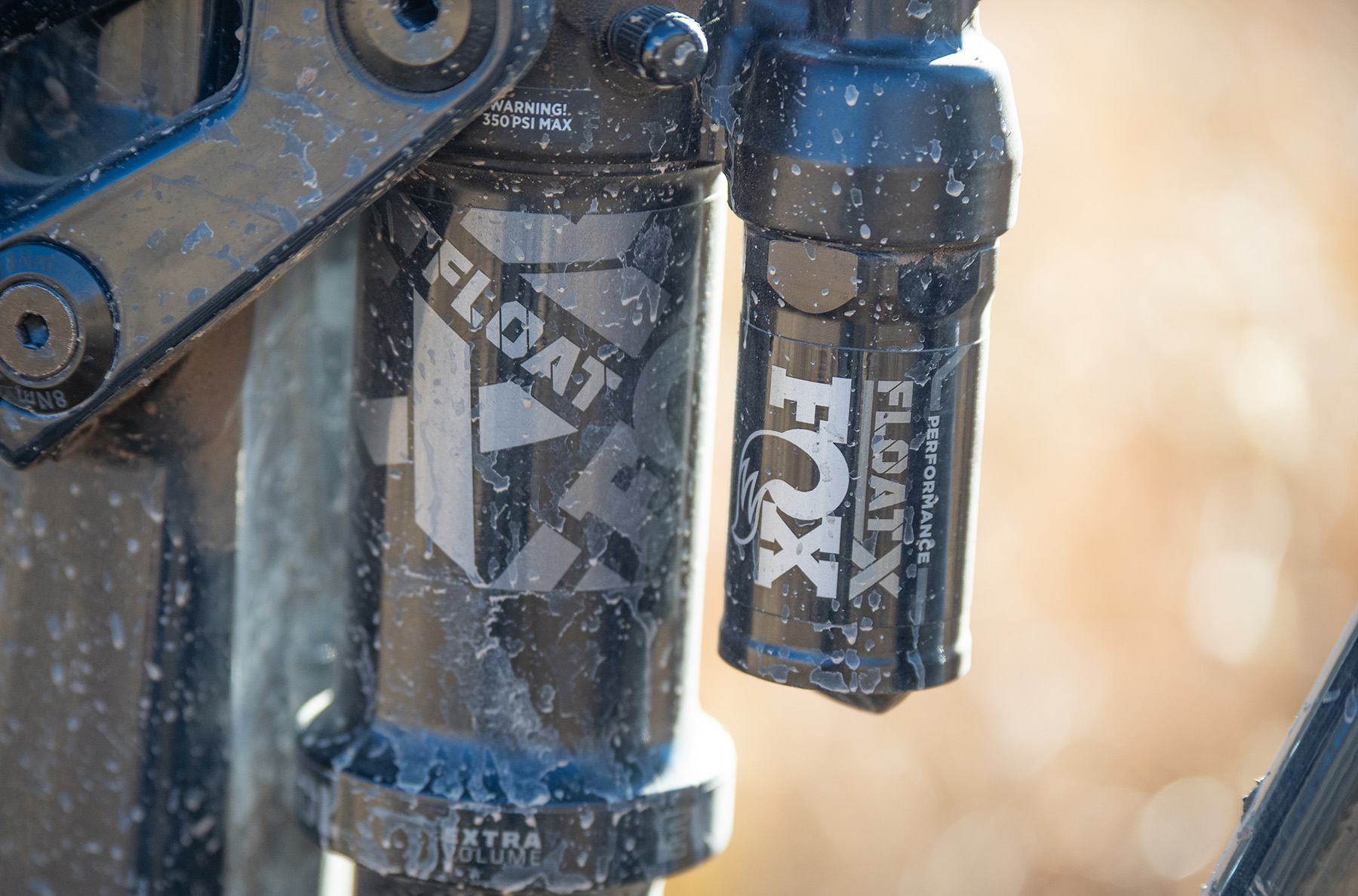
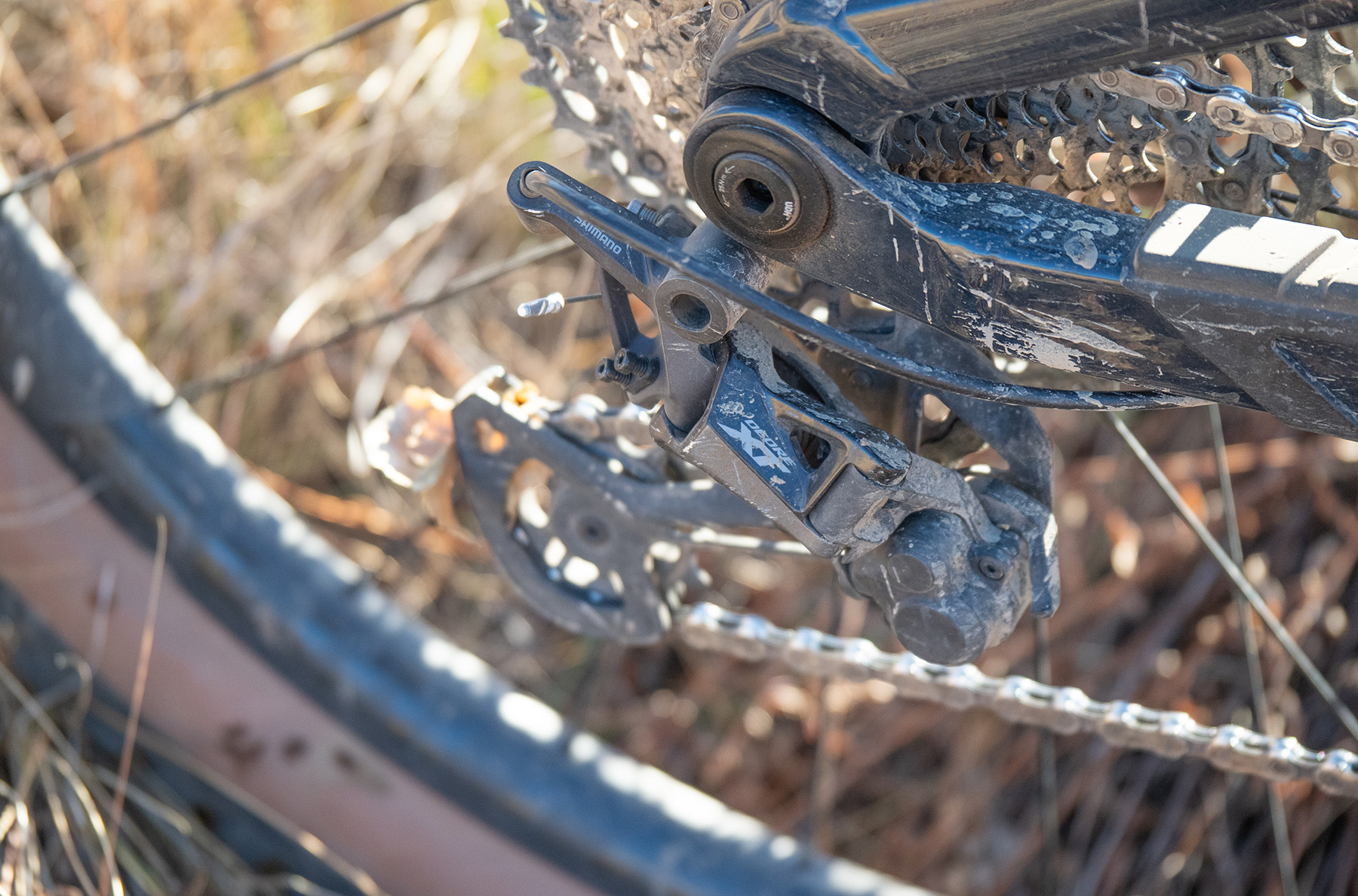
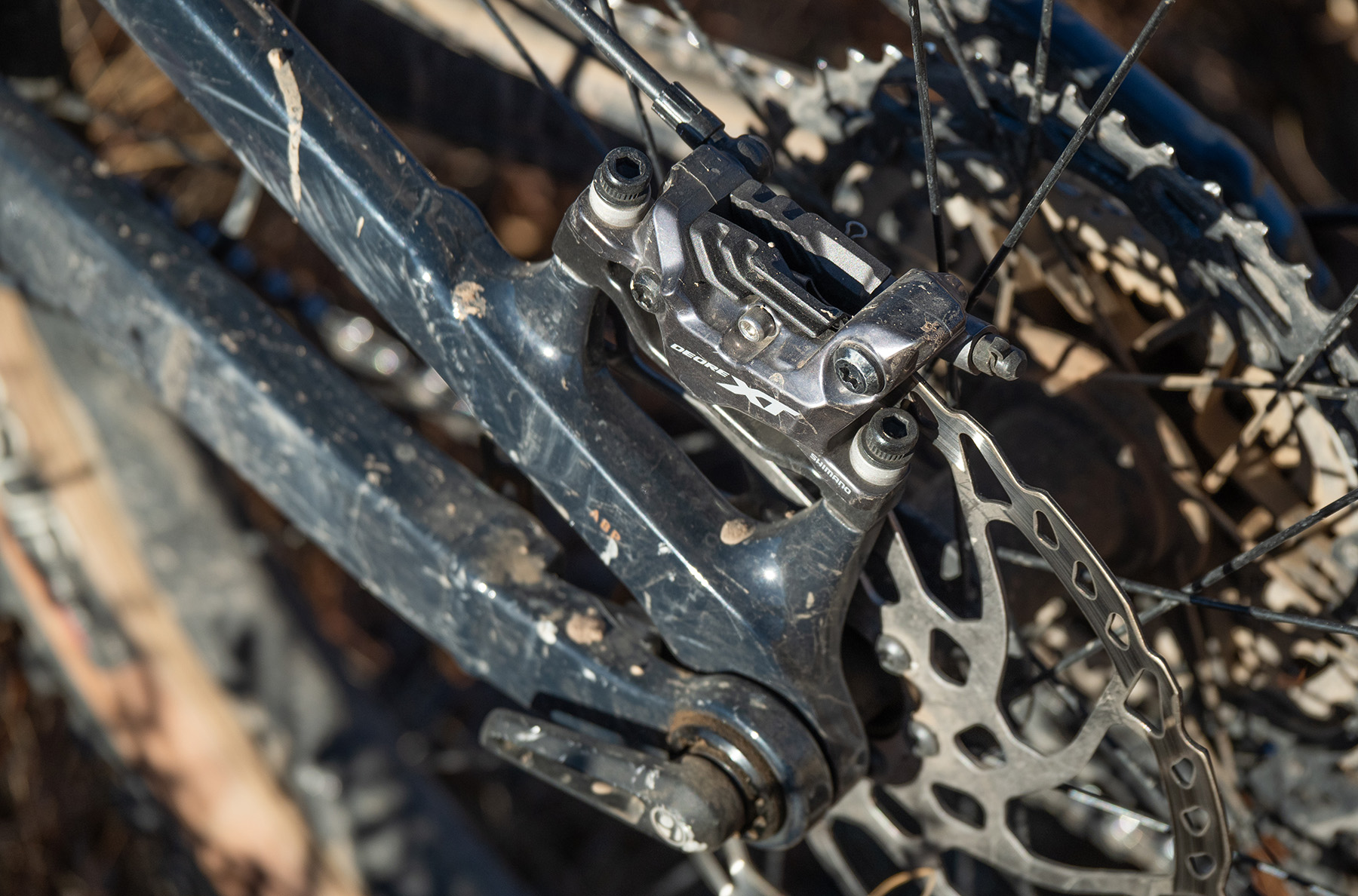
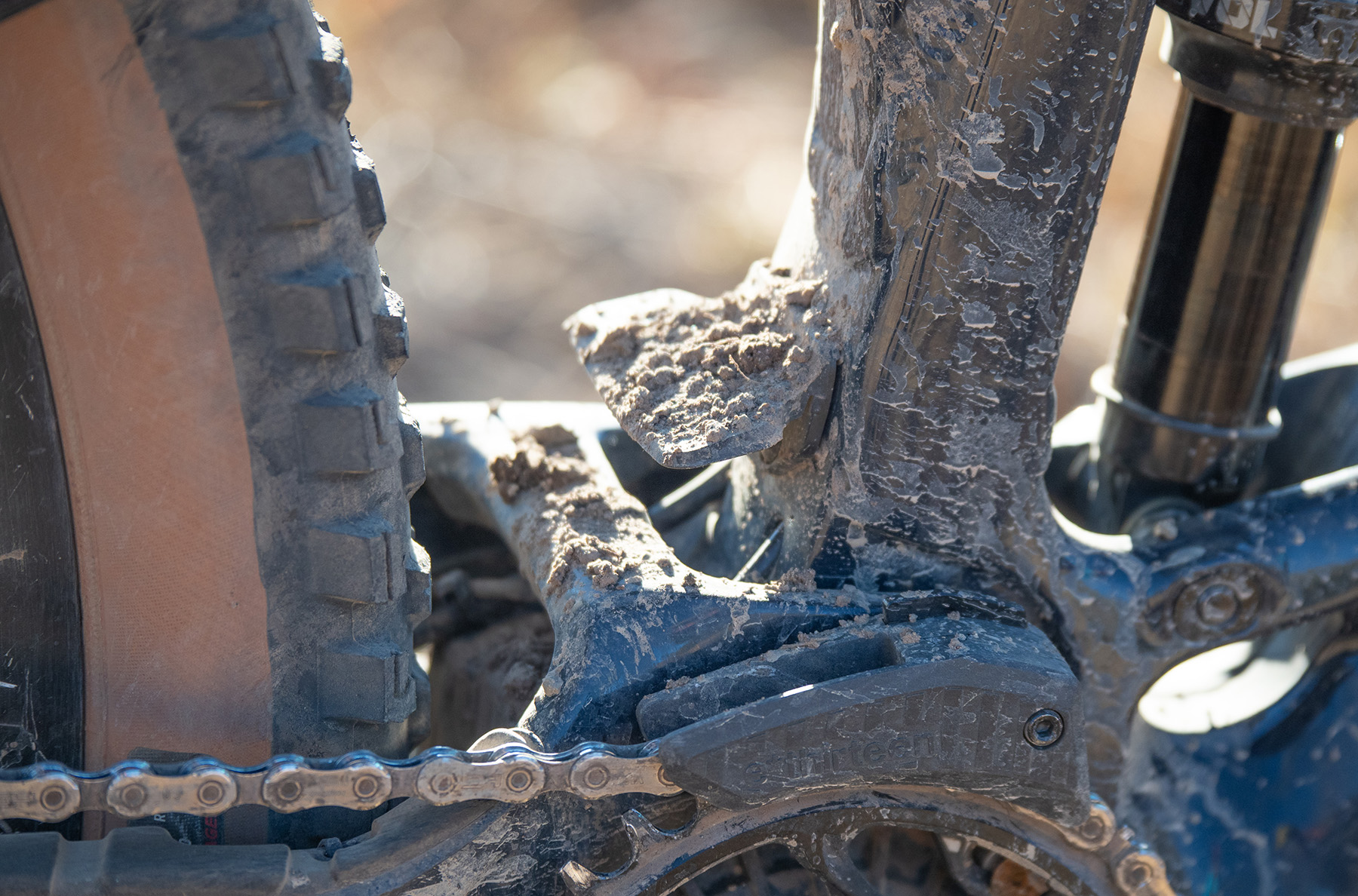

I have a tendency to abuse alloy rims out of their original shape, and the Bontrager Line Comp 30 wheelset on this bike had a hard time staying true after riding hard through many miles of rough terrain. But, the ride quality was fine, with nothing out of the ordinary to write home about, in a good way. The Bontrager XR5 tires did a good job of providing lots of traction, especially when braking, offering similar performance to the Maxxis Minion DHR, which it looks very similar to. The other Bontrager parts on this bike, including the bars, stem, and dropper post, to name a few, were also non-problematic and welcome pieces of the Fuel EXe.
Simon: No complaints really for me on the build. Sure, a higher-level fork would give it even more downhill performance (on top of already very good performance), but I think the spec is appropriate for the price.
Drive System and Range
Dylan: The TQ HPR50 motor system is one that prioritizes smooth power delivery, low noise, and a lightweight system. One of the first things I noticed aboard the Fuel EXe is that when pedaling even at the highest assist levels, the motor’s constant, low-level whirring is pleasantly quiet. In fact, the TQ HPR50 motor on the Fuel EXe is notably quieter than every other eMTB I’ve ridden, even other lightweight options in the Fuel EXe’s class. I will say that I personally don’t mind a noisy eMTB motor, especially if it’s a powerful one, but I can certainly understand why you’d want a quiet assisted ride like the Fuel EXe provides.

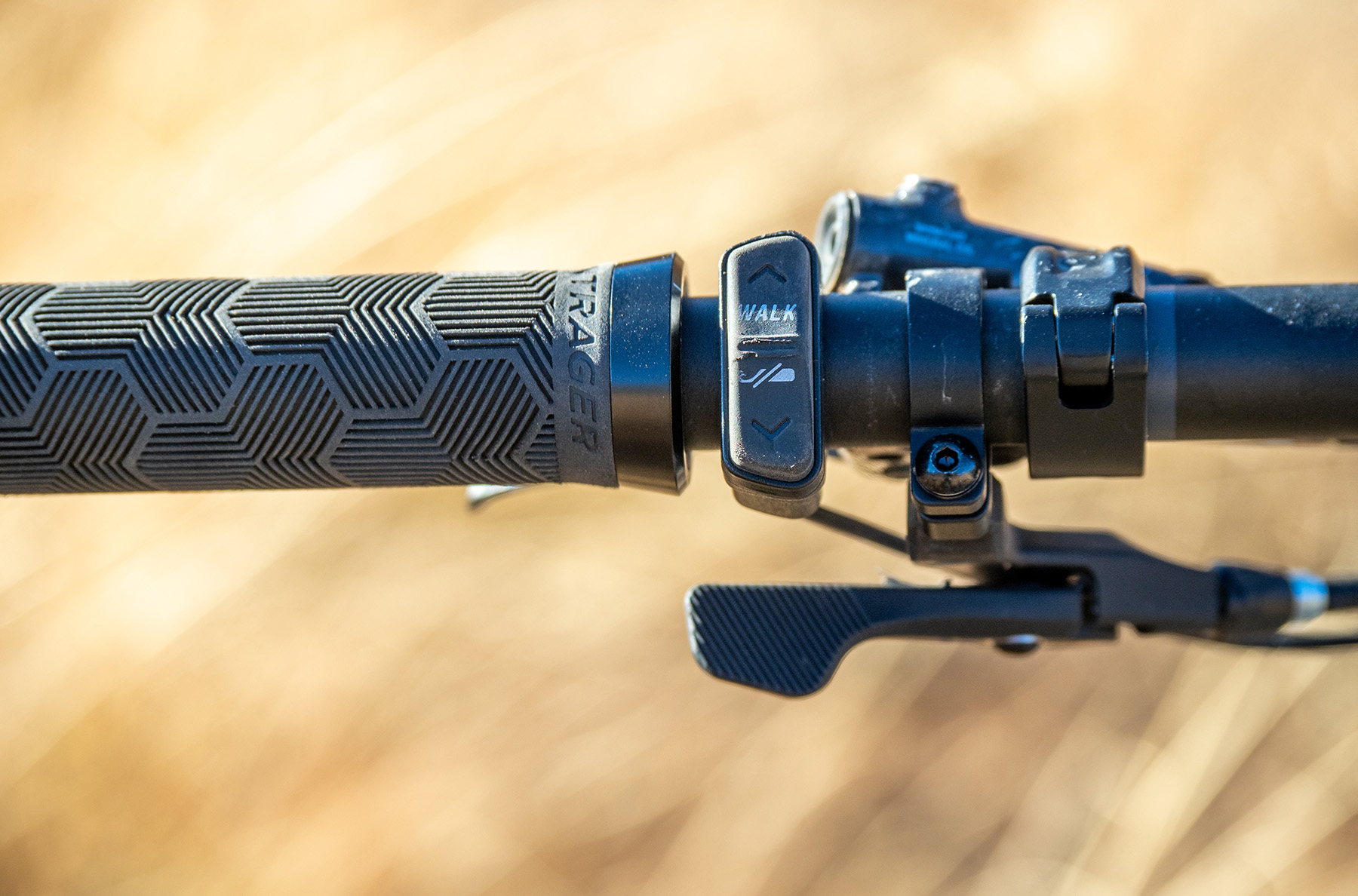
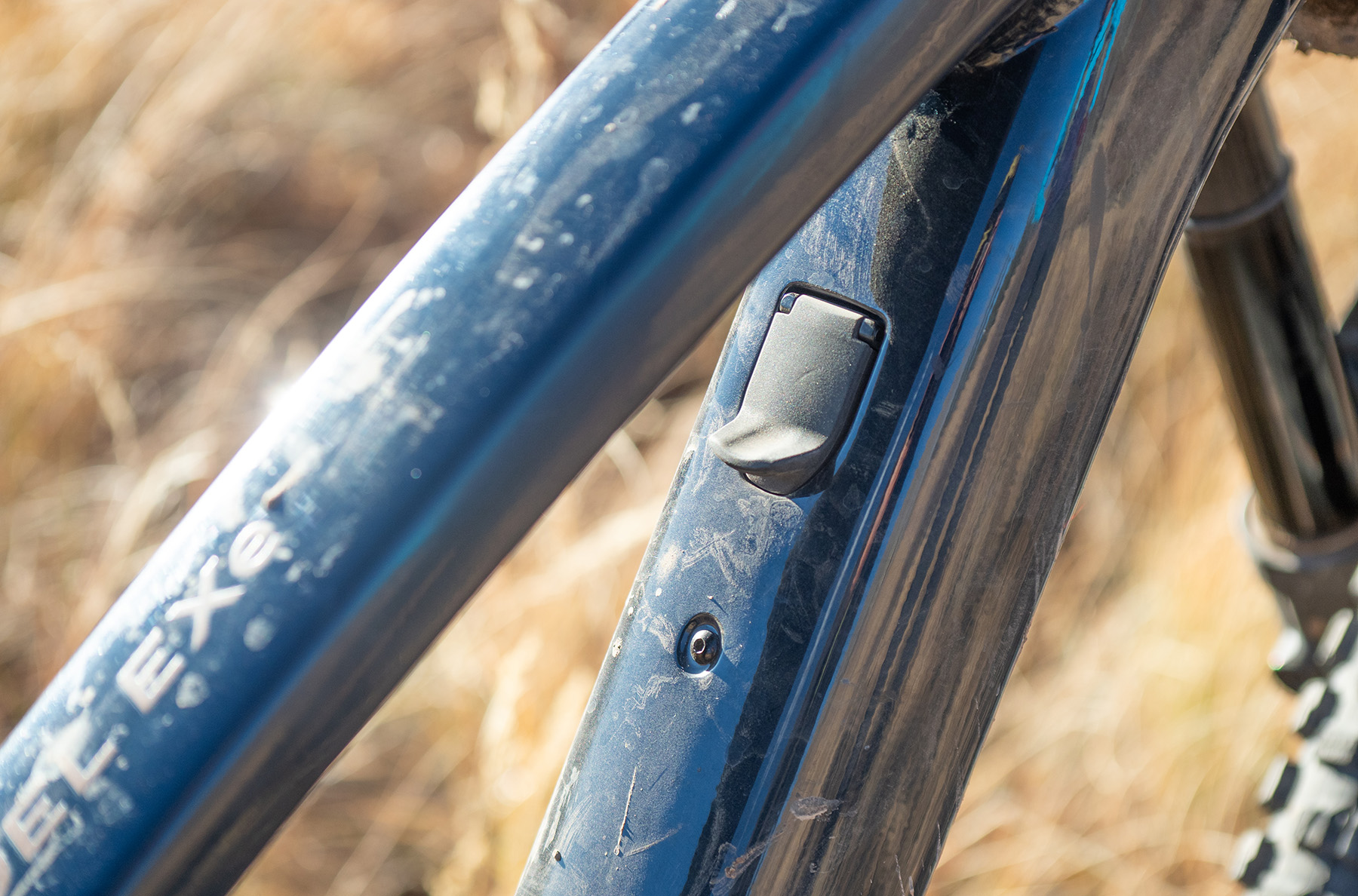
Compared to other light-assist systems, the TQ HPR50 isn’t quite as powerful but does provide smooth, consistent assistance. While other e-bike drive systems can have a more binary feel, providing a significant amount of assistance right off the bat that jolts you forward, the TQ HRP50 motor on the Fuel EXe aluminum does a great job at matching the rider’s effort in a predictable way. However, as I mentioned earlier, I found the TQ HPR50 system to come up short on some steep climbs where other light-assist systems (such as the Fazua Ride 60) can power through. This makes sense, as the TQ HPR50 system on the Fuel EXe maxes out at just 300 watts, whereas other light-assist motors can fall in the 350-600 watt range.
One thing I really liked about the TQ HPR50 drive system on the Fuel EXe Aluminum is the digital top tube display. Whereas other drive systems only tell you your battery range (usually expressed in fifths or even fourths of full capacity) and current assist level, the digital display on the Fuel EXe Aluminum provided me with tons of information that I found super helpful. I really liked knowing exactly how much battery I had left, especially on a bike with a smaller 360 wh battery. While other bikes that use 4-5 lights or bars will only be able to tell you that your battery life lies somewhere in a 10-20% range, I found it very valuable to know exactly how much battery I had left. Not only this, but the estimated range feature is really helpful. Though it can be misleading at times, basically acting like an instantaneous miles-per-gallon reading on a car, it was very helpful when I needed it most. For example, if I was pedaling along flat singletrack with about 50% battery left, it might tell me that I have 10 miles left at my current assist level. Then, if I were to start descending, the range would change, increasing to 30 miles or so. But when climbing uphill again, I’d be told I have only 5 miles left of battery. This can be confusing, but when worrying about battery life, I am mostly asking the question “Do I have enough battery to make it to the top of this climb?”, which this range estimation can definitely answer.
I was also a big fan of the real-time power meter, and I usually left the top tube display on this mode. It’s quite interesting to see not only how much power the motor is outputting, but how many watts you are generating yourself. It almost made me challenge myself to produce as many watts as I could, though it was discouraging sometimes to surpass 150 watts of human power to see the motor sitting at a steady 300 watts of assistance.
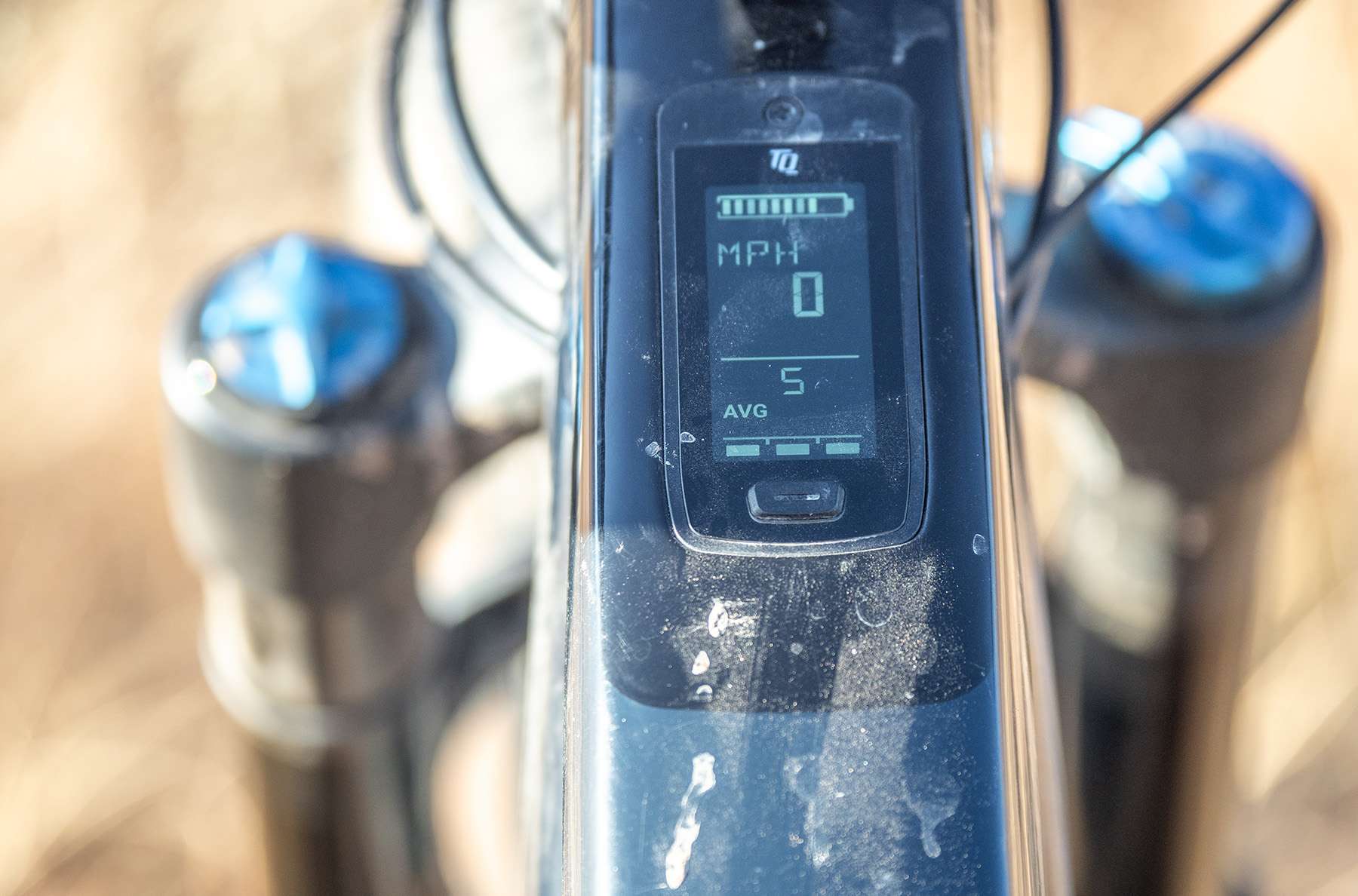
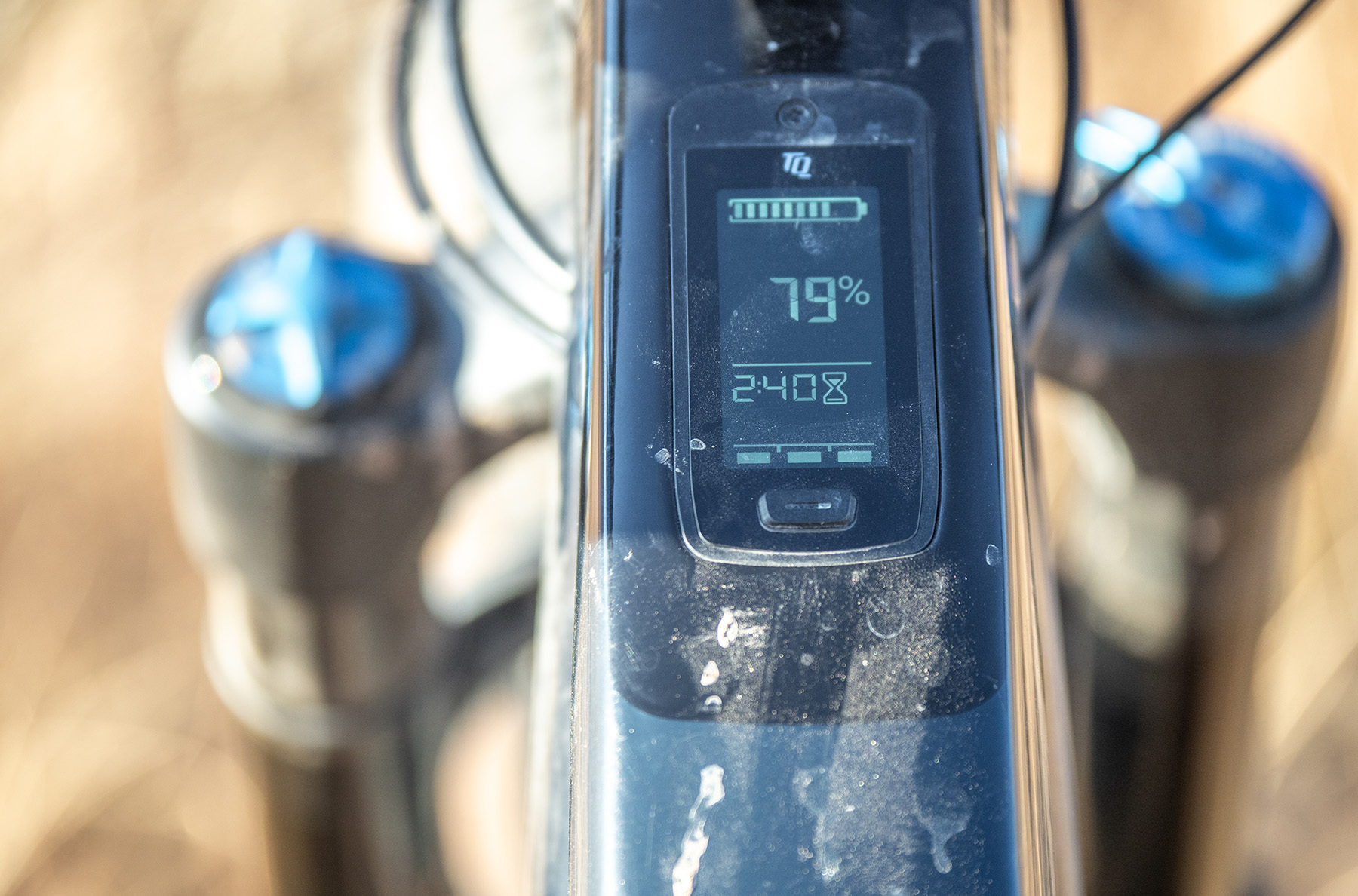
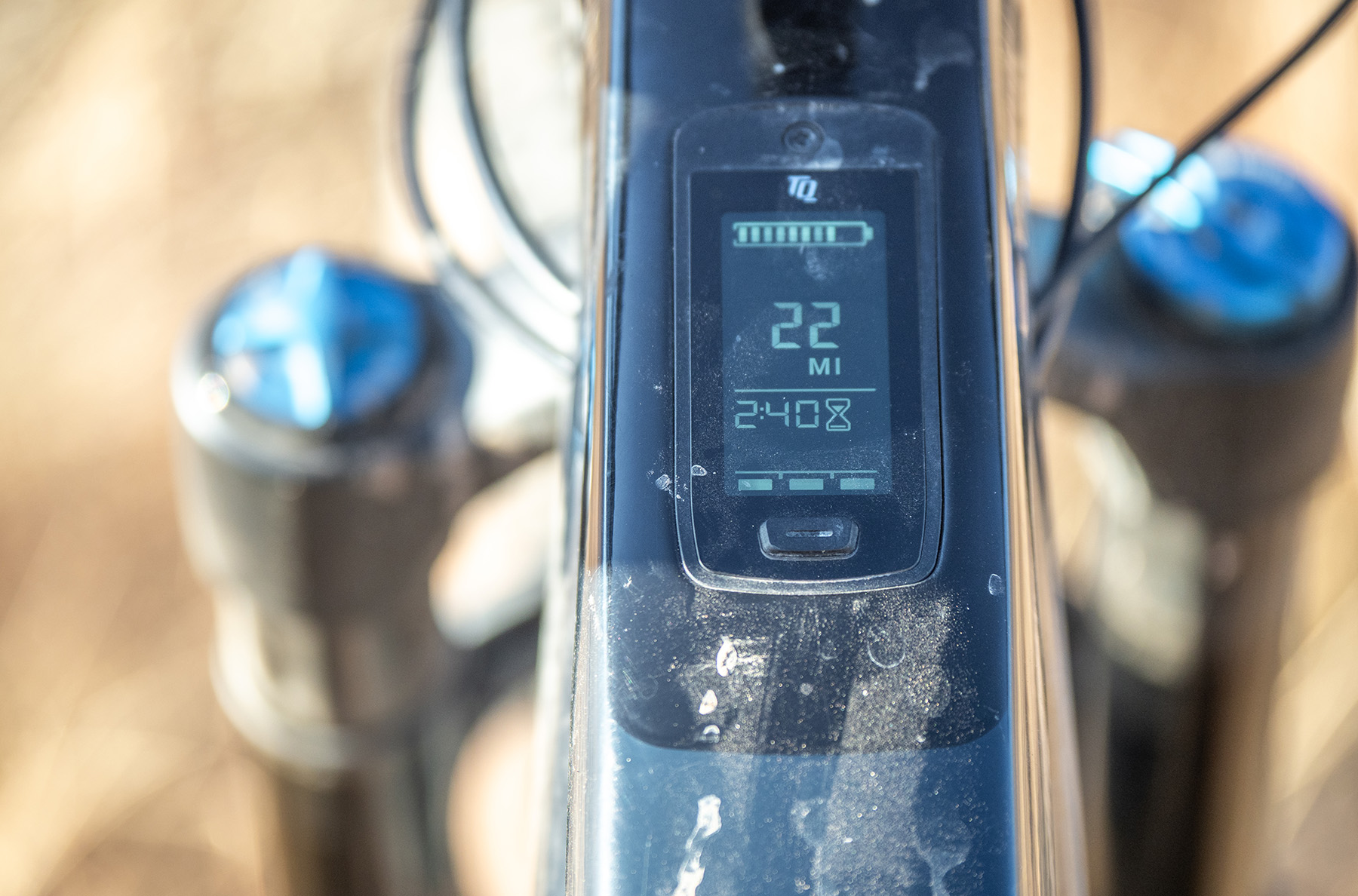
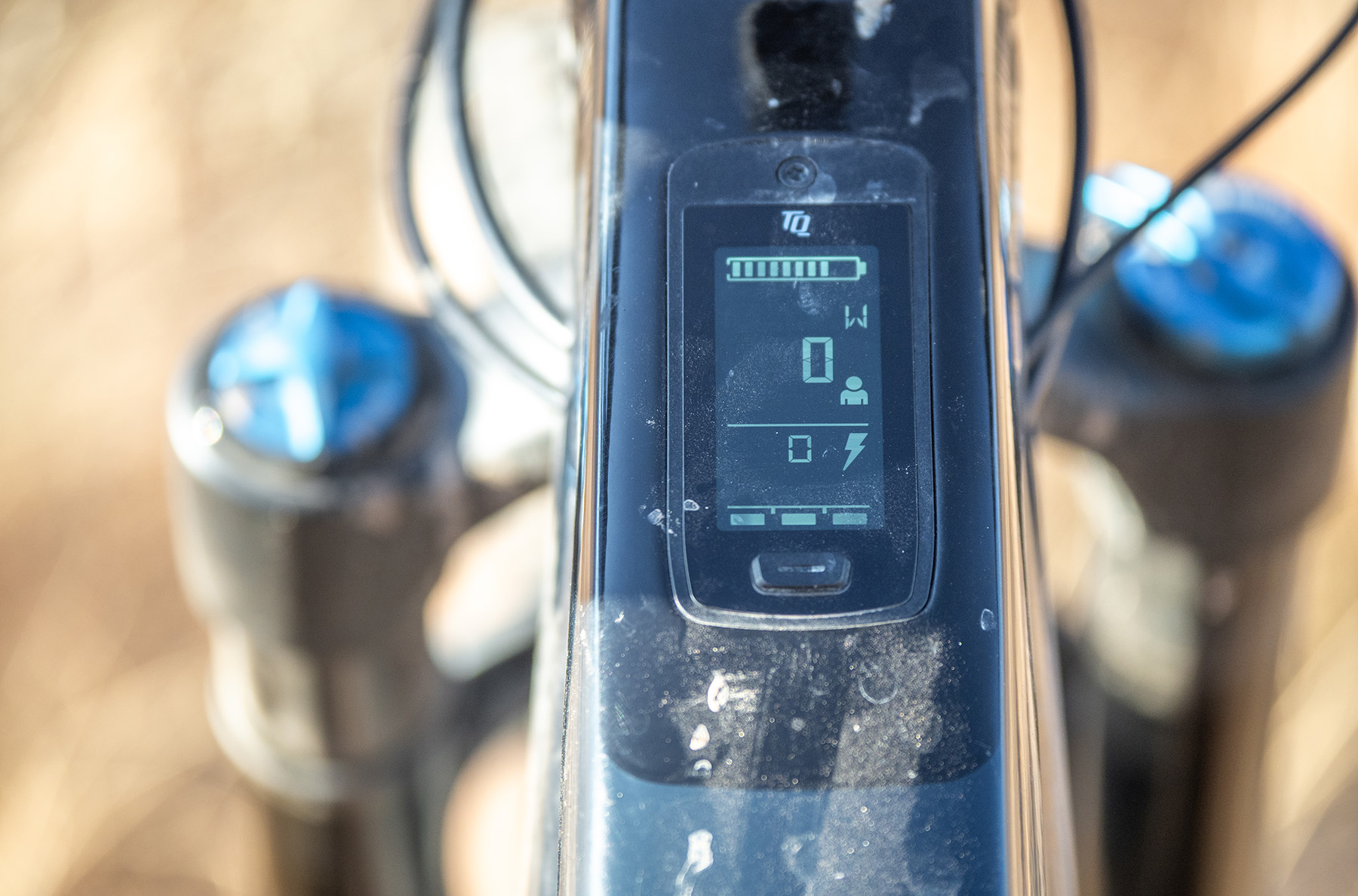
As far as the range of this system goes, it’s pretty reasonable for the amount of assistance it delivers relative to the battery size. If you’re spending the entire ride on the highest assist level, you can’t expect to hang with bikes with bigger batteries. But, with some time spent in the lowest or middle assist levels, you can easily get ~20 miles or so of singletrack with ~3,000 feet of climbing on the Fuel EXe. On the highest assist level, I could easily crank out ~15 miles of riding in about an hour, only expending about ⅔ of the battery. Being much more cautious and only riding in the lowest assist level could definitely last you 30-40 miles, but at that point, the assist is so minor that I might just prefer to be on an unpowered bike. If I were to own this bike, I would definitely buy the range extender to give myself an extra 160 watt-hours, bringing the total capacity to an impressive 520 watt-hours.
When the battery hits 10%, the assist level decreases significantly with the intention of preserving battery life to allow you to get home. Personally, I found it a bit annoying sometimes, and would rather the battery stay at normal assist levels so that I could at least “go out swinging” if I am going to run out of battery. But, when the battery fully runs out and you’re left with your own power, the TQ HPR50 motor has an impressive lack of resistance. While it certainly still isn’t ideal to run out of battery on the Fuel EXe aluminum, it is certainly more pleasant than doing so on full-powered e-bikes that have much more resistance.
It’s also worth mentioning the excellent Trek Central app that connects to the Fuel EXe Aluminum. This app gives you real-time range estimations based on your battery level, the terrain you are in, your rider weight, and your riding history. It also gives recommendations for your tire and suspension pressures and allows you to plot out rides on a digital map. When you’re riding, it will also give you a screen of all your current stats, such as mileage, ride time, and more. Last but certainly not least, you can tweak the settings of each assist level, controlling the max power, assist percentage, and pedal response on a scale of “gradual” to “quick.” And if you end up tweaking these a little too far, you can reset each mode back to the factory presets.
Simon: I’m a fan of the TQ HPR50 drive system for a number of reasons, primarily its smooth and quiet power delivery, compact design, fantastic integrated top tube display, and overall high level of refinement. I will even go so far as to say that it gets close to Bosch and Shimano levels of refinement — which is understandably high praise, especially given it’s TQ’s first eMTB drive system.
To expand on what Dylan said about range, I did a ride with almost 30 miles and over 4,000 ft of climbing, staying mostly in the lowest power setting, and I ended up within a mile of the trailhead before running out of battery power (without the range extender). With that said, running the Fuel EXe in the lowest power mode feels barely faster than a non-powered bike, and isn’t my preferred way to ride eMTBs. I think the Fuel EXe does its best work on shorter rides, and if longer ones are in the cards, then I would consider the optional range extender or an eMTB with a bigger battery.

The TQ HPR50 has the least amount of mechanical resistance out of any of the drive systems I’ve been on once past the 20 mph cutoff (or when out of battery power). The lower resistance makes it easier to go faster once the assist drops off, plus, I’m more apt to do so since you are rewarded with an appreciable increase in speed — it is a very different experience than you get on most of the full-power drive systems, which feel like you threw an anchor out at 20mph. Additionally, again due to the low resistance, I have very little battery anxiety about running out of power with the TQ system. Pedaling the Fuel EXe home with a dead battery is far less onerous than it is on most other eMTBs.
Who’s It For?
Dylan: Folks looking for a smooth, quiet, lightweight e-mountain bike that offers ride characteristics more similar to unpowered bikes than most other mountain bikes with a motor. Plus, with an MSRP under $7,000 that packs a lot of value in the components, the Fuel EXe Aluminum is a really great option for folks in the market for a high-quality eMTB who also don’t want to break the bank. The Fuel EXe has well-rounded geometry and predictable suspension characteristics that make it hard to get out of place, making it a solid option for people who ride a wide variety of terrain, or who aren’t sure what their eMTB adventures have in store.
Simon: Dylan has done a nice job of summarizing who the Fuel EXe may appeal to. I agree that the value proposition is hard to ignore, but will also add that just how competent it is in varied terrain, combined with how well it handles an aggressive riding style, or a more dialed-back style, make it an especially compelling option for an all-around eMTB. If you have decided a lighter-weight, lower-powered eMTB is a good fit, then definitely give the Fuel EXe some consideration.
Bottom Line
With a lightweight feel and quiet, smooth motor that provides an experience not too far off from riding an unpowered MTB, the Fuel EXe Aluminum is easy to get used to regardless of how much eMTB experience you have. Perhaps more importantly, though, we are really impressed by the versatility and adaptability of this bike and had a really hard time getting it to feel out of place.
Deep Dive Comparisons
BLISTER+ members and those who purchase our Digital Access Pass can check out our Deep Dive comparisons linked below. Get our Digital Access Pass to view all our Deep Dives and Flash Reviews, or become a BLISTER+ member today to get access to that and a LOT more, including the best worldwide Outdoor Injury Insurance, exclusive deals and discounts on skis, personalized gear recommendations from us, and much more.

Deep Dive: Trek Fuel EXe Aluminum
We compare the Trek Fuel EXe Aluminum to the Pivot Shuttle SL, Norco Fluid VLT 130, Cannondale Moterra SL, Pivot Shuttle AM, Trek Slash+, Santa Cruz Heckler SL, Rocky Mountain Instinct Powerplay, & Trek Fuel EX.
Blister’s Flash Reviews and Deep Dives are accessible to those who purchase one of our paid subscriptions
To get our comprehensive Deep Dives and our initial, unfiltered reports on new gear, become a member and receive many other services, deals, and discounts.
If you’re already an active member, please log in.
(If you’re already logged in and a member in good standing and seeing this message in error, please refresh this page in your browser.)

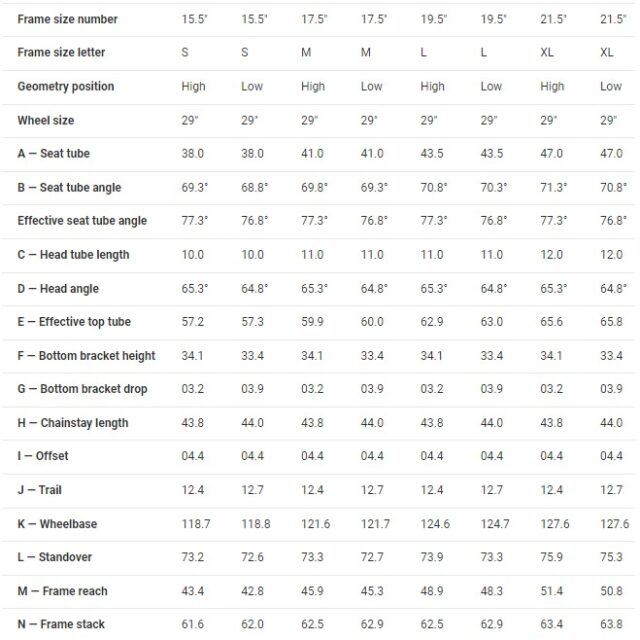
Cool to see this come down in price. I’ve got extensive time on the EX and EX-e. A few observations:
They handle very similarly.
The TQ is very quiet, and the noise it makes is not irritating.
The TQ motor (or Trek’s software tuning of same) rewards a higher cadence.
The app to customize motor performance is very elegant and simple, simple, simple. I retuned my power levels so 3 = factory 2, 1 = 1, and 2 = factory 1.5. Five minutes tops to do this.
I’ve been riding the Fuel exe 9.5 for a couple of months now and with a few upgrades it is a very capable bike.It’s light enough to throw around a bit and the motor system is ideal for my needs- I’m older and it allows me to ride with my young friends without getting so rinsed on the uphills that the downhills aren’t fun!! I’m riding uphill more often(anx I live next to a lift serviced bike park) and rediscovering trails that I haven’t ridden in years.I’d say this sort of bike is for the rider who wants tree s some assistance but doesn’t need or want the mega power and weight of a full power e bike.
Nice full review. I too love the top tube display, always striving to be providing more watts than the motor!
I’m a bit bigger, near 200 pounds, and would love to see the next generation of the FEX-e come with a battery between the 360 currently offered, and the monster-sized battery on the new Slashey (which is its proper name, regardless of what Trek says). :-)